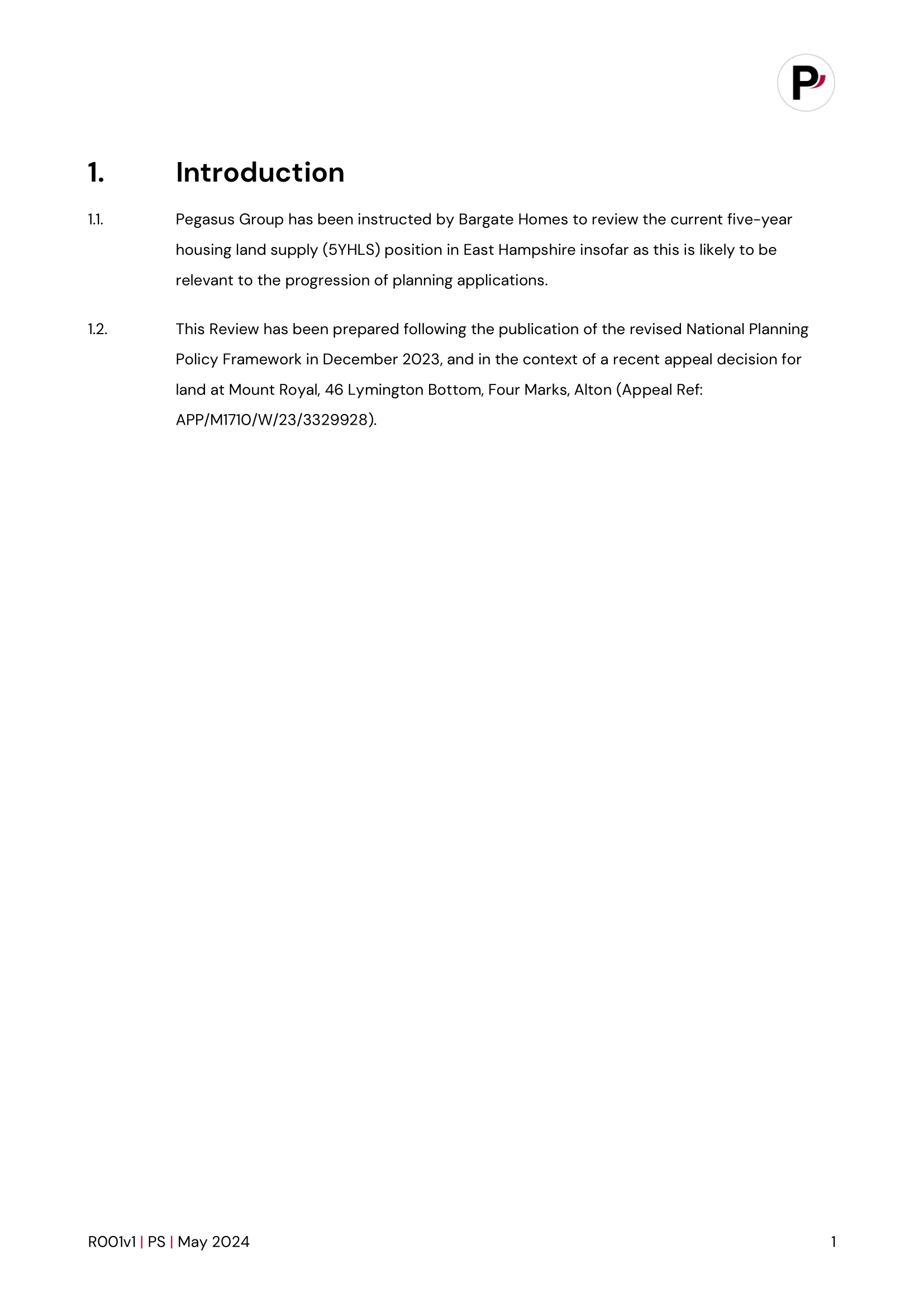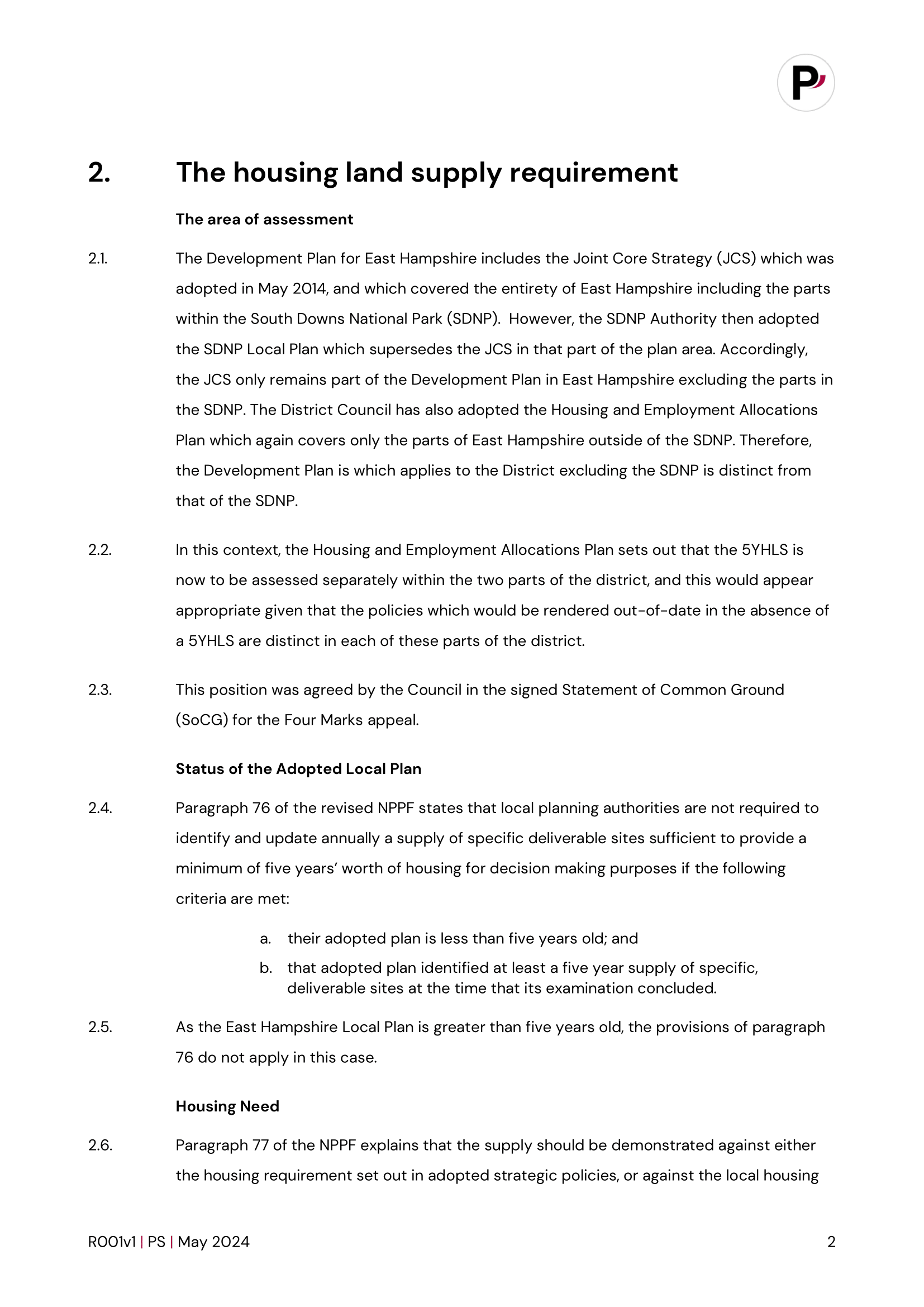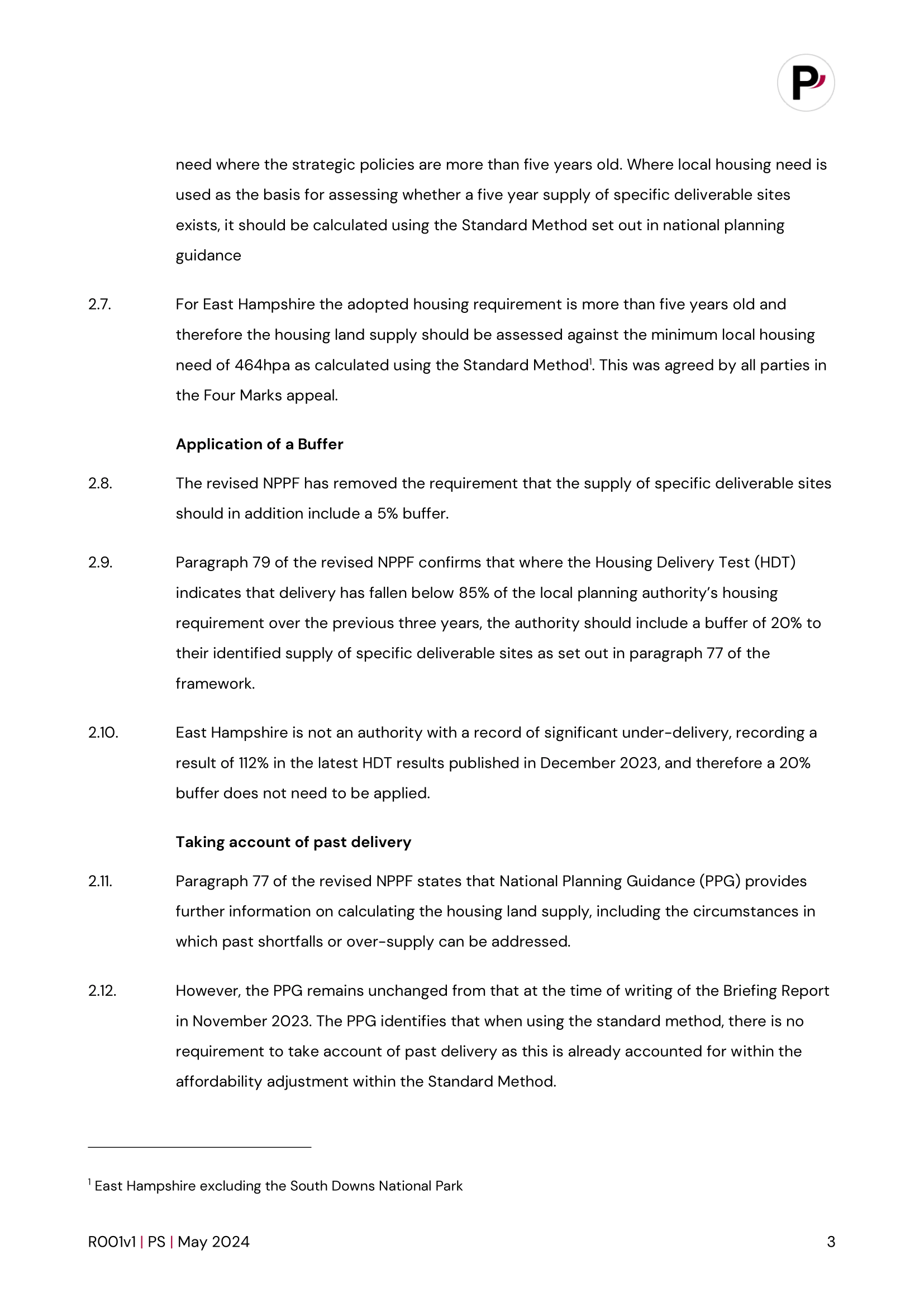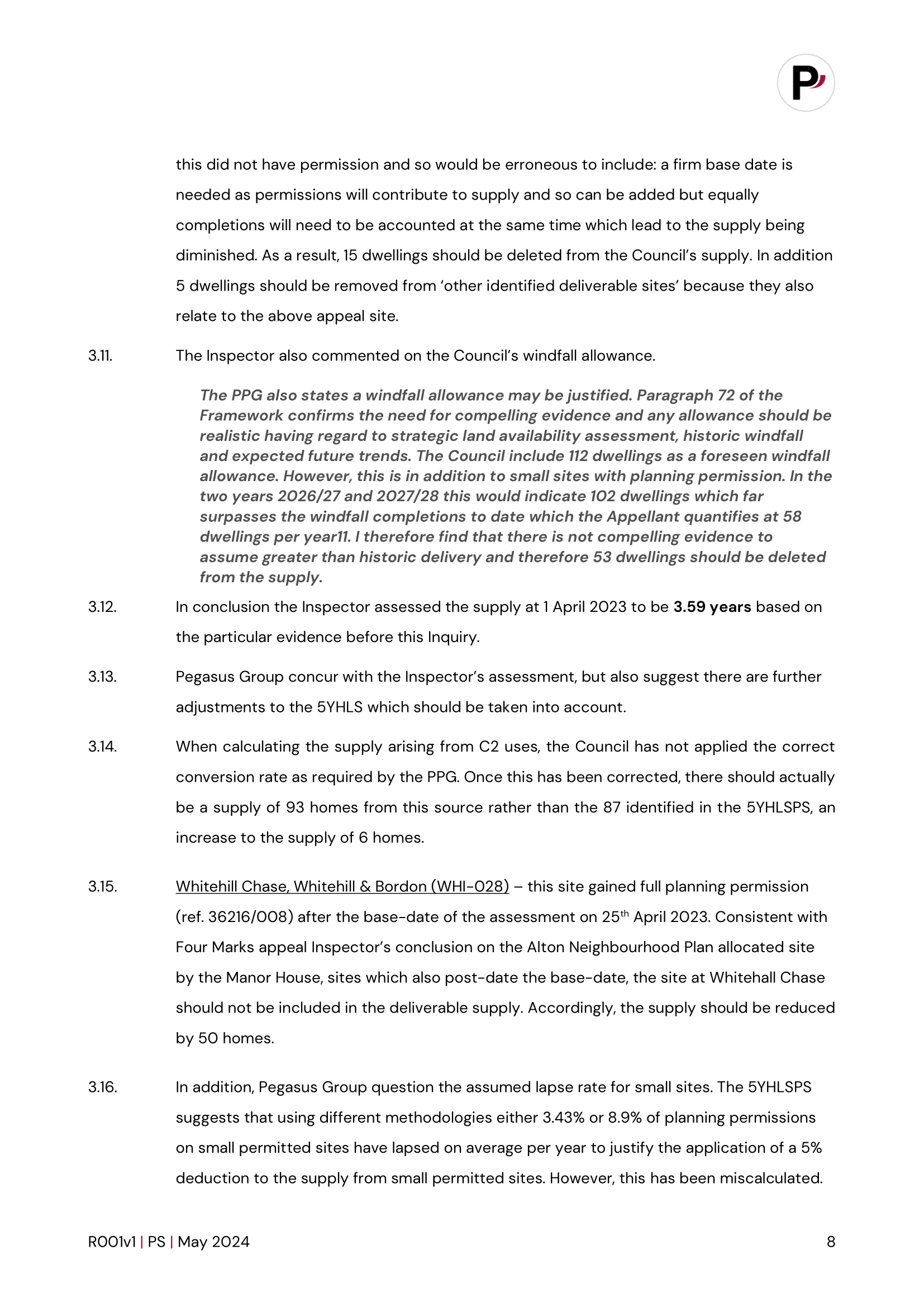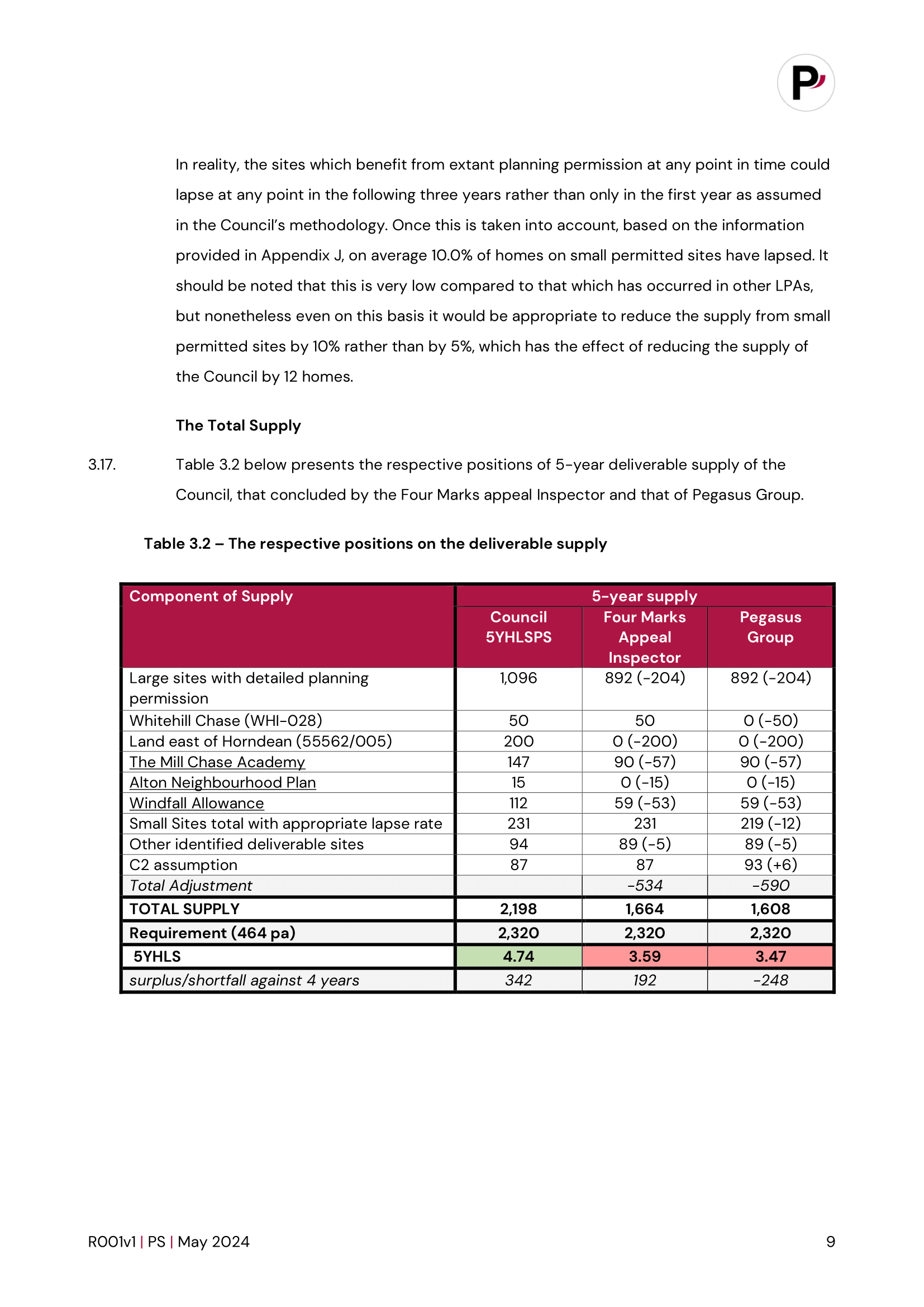Tag: MPC: Economic Benefits
Material Planning Considerations:
Potential economic benefits, such as job creation and investment in the local area.
HOUSING_LAND_SUPPLY_ASSESSMENT-1335961.pdf
Bargate Homes – Housing Land Supply Assessment
Our Analysis of the Housing Land Supply Assessment Document – Key Points
The analysis of the Housing Land Supply Assessment Document primarily relates to the following Material Planning Consideration categories
Material Consideration
- Local and National Planning Policies: The assessment influences compliance with planning policies and frameworks at both local and national levels.
- Infrastructure and Services: Evaluates the availability and capacity of infrastructure and services to support new housing developments.
- Residential Amenity: Considers the impact of housing supply on the living conditions and quality of life for existing and future residents.
- Sustainability: Addresses the long-term sustainability of housing developments in relation to environmental, economic, and social factors.
- Land Use: Directly affects decisions on the allocation and use of land for housing developments.
Conclusion
The primary categories are Local and National Planning Policies, Land Use, and Economic Benefits, as these directly relate to the planning framework, housing needs, and implications of the housing land supply assessment.
Infrastructure and Services, Sustainability, and Residential Amenity are also relevant as they reflect the broader impacts and considerations of the proposed housing developments.
Material Planning Considerations: Economic Benefits
Economic Benefits considerations focus on evaluating the positive impacts that a proposed development might have on the local, regional, or national economy. These considerations ensure that new developments contribute to economic growth, job creation, investment, and overall economic stability and prosperity.
Key Components of Economic Benefits Considerations
How Economic Benefits Considerations Influence Planning Decisions
1. Economic Impact Assessments (EIA):
- An EIA may be required to quantify the economic benefits of a proposed development. This assessment helps planning authorities understand the potential economic impacts and weigh them against other considerations.
2. Balancing Benefits and Impacts:
- Planning authorities must balance the economic benefits of a development with other material considerations, such as environmental impact, residential amenity, and heritage conservation. Significant economic benefits can sometimes justify developments that have other impacts, provided those impacts are mitigated.
3. Policy Compliance:
- Developments must align with local and national economic development policies and strategies. This includes ensuring that the development supports economic growth objectives set out in the Local Plan, Regional Economic Strategies, and the National Planning Policy Framework (NPPF).
4. Stakeholder Consultation:
- Input from local businesses, economic development agencies, and other stakeholders is considered to understand the broader economic implications of the development. Their feedback helps shape the evaluation of economic benefits.
5. Long-term Economic Sustainability:
- Planning authorities consider the long-term economic sustainability of the development. This includes assessing whether the development will continue to provide economic benefits over time and adapt to changing economic conditions.
Importance in Planning Applications
1. Economic Growth and Stability:
- Developments that provide significant economic benefits can contribute to the overall growth and stability of the local and regional economy. This includes job creation, increased investment, and enhanced business activity.
2. Quality of Life:
- Economic benefits can improve the quality of life for residents by providing employment opportunities, enhancing public services, and stimulating local businesses.
3. Community Development:
- Developments that support economic growth can also foster community development by providing funding for community facilities, infrastructure improvements, and public services.
4. Attracting Investment:
- Successful developments that demonstrate clear economic benefits can attract further investment, creating a positive cycle of economic growth and development.
5. Legal and Policy Compliance:
- Ensuring that developments provide economic benefits is often a requirement of local and national planning policies. Non-compliance can result in planning applications being refused or challenged.
Conclusion
By thoroughly considering economic benefits in planning applications, planning authorities can ensure that new developments contribute positively to the economy, creating jobs, stimulating investment, and enhancing the overall economic health of the community. This comprehensive approach helps balance development needs with economic sustainability, promoting growth and prosperity while addressing other material planning considerations.



